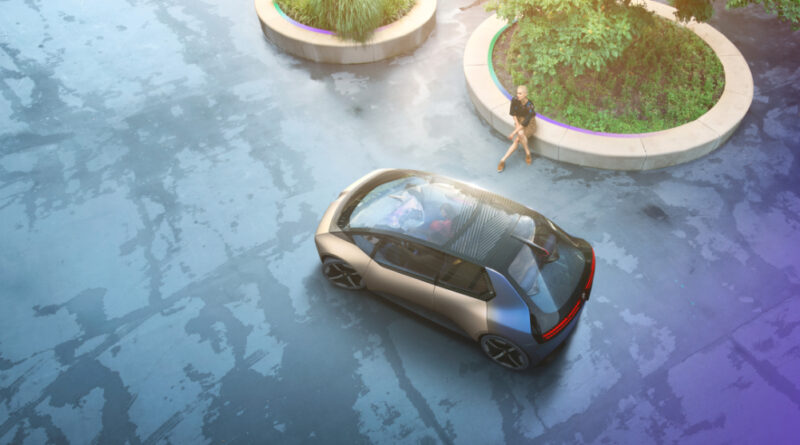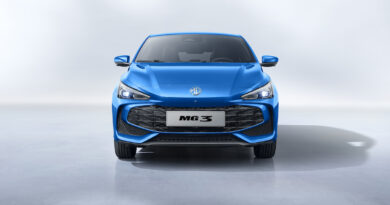The BMW Group’s 360-degree approach to sustainability
WORLD EV DAY SPECIAL: Produced in partnership with BMW
The phrase “as the seasons change” has taken a whole new meaning in the past few years, as the seasons really do feel like they’re different now – wetter, hotter, drier, somewhere in the world seems to be constantly in crisis on any given day.
As the issue of climate change heats up, it’s natural to ask “are we doing enough” and, on World EV Day in particular, will switching to EVs be enough to reduce the CO2 emissions produced by the world’s cars?
Reducing the tailpipe emissions of a car to zero, as the EV revolution has, is a great start, but obviously, the way we build those cars, and the way we reuse the materials that were used to create them, is going to have to change as well.
The world’s biggest car companies know this and the next EV-olution is all about CO2-neutral factories and even the goal of building a vehicle that is totally climate neutral.
BMW CONTENT HUB: Plug-in hybrid vs pure EV: Which green tech is right for you?
BMW CONTENT HUB: Modern luxury: Exploring sustainability in the premium space
BMW CONTENT HUB: Is plug-in hybrid technology a better solution than EV for right now?
BMW CONTENT HUB: Think all EVs are equally green? Think again
At the other end of a car’s life, though, what happens to all those elements that come together to build a vehicle? Can they be reused, recycled, repurposed?
This is the idea of the circular economy, a future in which we don’t waste so much, and we create vehicles that are not only made from 100 per cent recyclable materials, but 100 per cent recyclable at the end of their lives as well.

Or what if they didn’t have to have an “end” as such. BMW is one company that’s putting forward the idea of a “perpetual mobility device”, a vehicle that you can just pop parts off – doors, bonnets, whatever – then recycle the old and replace them with new ones.
BMW has already come up with just such a car in the alluringly modern and city-focused shape of the i-Vision Circular Concept.
This i-Vision Circular represents the BMW Group’s commitment to becoming the most sustainable manufacturer in the premium space, and making its vehicles a part of the Circular Economy concept, which is all about rethinking, reusing, reducing and recycling.
Every part of the i-Vision Circular has been designed to minimise waste, and weight. Even the BMW logo itself is no longer a plastic badge, it’s been milled into the bonnet.
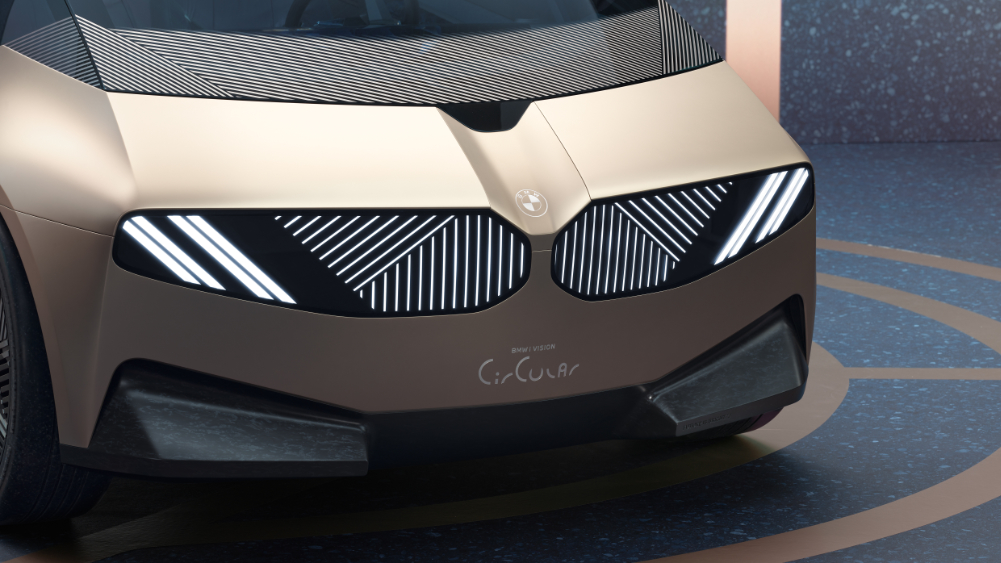
This cool concept also looks stunning, despite not using paint, because that’s not always environmentally friendly. Made out of anodised aluminium, it gives off a unique sheen.
The idea of minimising waste in cars is one that BMW’s Head of Design Domagoj Dukec is
passionate about, and he’s particularly proud of the looks, and materials used in, the Vision
Circular.
“So you’ve got real craftsmanship there, it looks more high end, but at the same time you’re doing away with 10 other components – it’s premium, but in a whole new way,” Dukec explains.
Dukec’s aim with interiors like the one found in that concept, and the road-going iX electric SUV, was to strip away what he calls “unnecessary jewellery”, like wood and aluminium, and decorative lines.
He believes the structure itself can be made so attractive that it doesn’t need that “jewellery” on
top.
As Dukec knows, today there are many different customers with widely varying tastes, but he believes designing a BMW that will inspire buyers in markets as diverse as Saudi Arabia, China and Europe comes down to just two things – “wow” and “meaningfulness”.
“What we need at first is an aesthetic attraction, everybody needs that moment, the stunning look, but it’s not like there’s a recipe and you just make it, you have to find out who the customer is for each car, and find out what is the ’wow’ for each, he says.
“But just being wow is not enough, like when you meet a person and you think she looks great, but this is not enough for eternal, long-lasting love, you need something deeper, so you need meaningfulness.”
He firmly believes that sense of meaningfulness is imbued in the iX, with its cool, minimalist aesthetic. The super modern EV represents the sustainable, less-is-more approach BMW is heading towards, after BMW CEO Oliver Zipse declared that his company will make “the greenest” cars on the market.
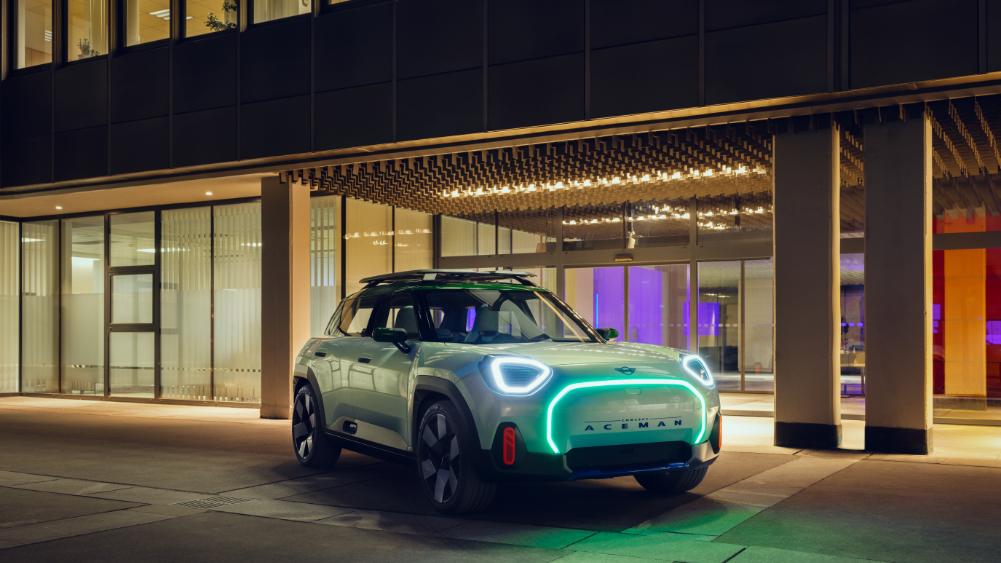
Another fantastic vehicle – and a natural fit for electric technology – is the MINI Concept Aceman, the BMW Group brand’s first ever fully electric crossover SUV.
The Aceman has an electrified go-kart feel and strong focus on a minimal environmental impact, but that green ethos isn’t merely down to a zero-emissions powertrain. There’s much more to sustainability than what doesn’t come out of the exhaust pipe.
The Aceman’s design language, called “charismatic simplicity”, also embodies a sustainable circular economy approach. The look is pared back and the car is devoid of chrome, while the interior concept is trimmed in cool, recycled synthetic fabric.
This future focused Mini, with its LED front end that can light up a digital version of the Union Jack will show a message to its owner as they walk up to unlock it.
And, thanks to its electric powertrain removing the need for big lump of engine up front, the bonnet has been made shorter to provide more space inside the cabin.
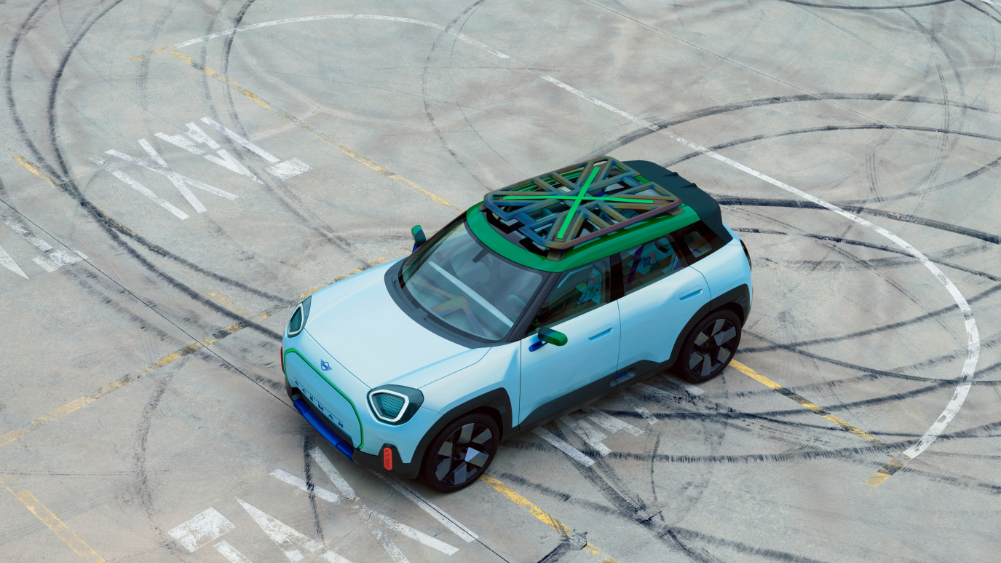
By the end of 2022 BMW – which is also the parent company of MINI – will have produced 15 new battery electric vehicles. Its aim is that at least half of all the cars it sells will be full EVs before 2030.
It’s hard to imagine now, but you have to wonder whether there’ll even be a need for a World EV Day by the end of this decade. By then, it would just be called World Car Day.

